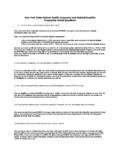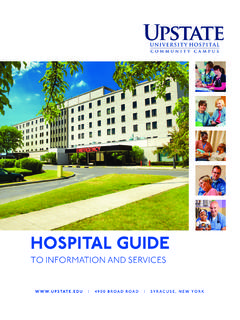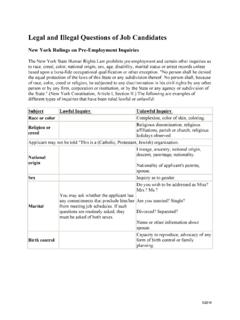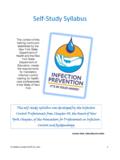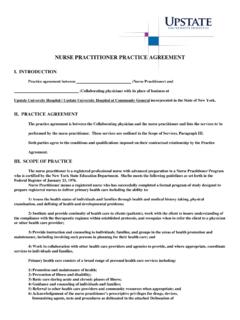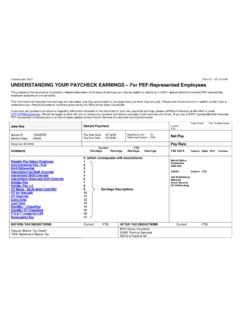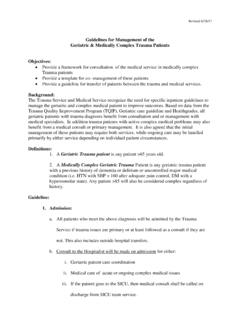Transcription of Moderate Sedation Provider Packet - Upstate Medical …
1 Moderate Sedation Provider Packet An Educational Packet for Review by Non-Anesthesiologists Providing Moderate Sedation During Elective, Diagnostic and Therapeutic Procedures 1|P a g e OTD & Sedation Task Force Revised 3/2001; 9/2001; 6/2002; 12/2005; 6/2009; 12/2010 (mol); 6/2012(mol); 11/2015; 8/2016 (mol);. 8/2018. INTRODUCTIONS. The National Integrated Accreditation for Healthcare Organizations (NIAHO) standards for Anesthesia Services taken from the Accreditation Requirements' Interpretive Guidelines & Surveyor Guidance Revision states If a hospital does provide any degree of anesthesia/ Sedation service to its patients, these services will be provided in an organized manner.
2 The anesthesia/ Sedation services will be offered under the direction of a qualified doctor of medicine or osteopathy. This individual will be responsible for all anesthesia/ Sedation administered throughout the organization. The Department of Health & Human Services (DHHS) Centers for Medicare & Medicaid Services (CMS) in May 2010 provided Clarification of the Interpretive Guidelines for the Anesthesia Services Condition of Participation. Det Norske Veritas (DNV GL). standards, based on NIAHO and CMS requirements provided in August 2014 Standard, Interpretive Guidelines and Surveyor Guidance for Hospitals.
3 Sedation is a continuum. It is not always possible to predict how an individual patient receiving Sedation will respond. Qualified individuals must be trained to monitor patients carefully to maintain them at the desired level of Sedation , to recognize problems and to promptly institute appropriate interventions. The purpose of University Hospital's Moderate Sedation Policy, as outlined below, is to establish hospital-wide standards for the safe administration of Moderate Sedation and the monitoring of patients who receive it.
4 This policy applies to all patients who receive Moderate Sedation in any setting, by any route for any diagnostic, therapeutic or surgical procedure. This policy specifically excludes therapeutic management of pain or seizures, pre-operative Sedation , Sedation for anxiety control and Sedation for mechanically ventilated patients. The administration of regional, general anesthesia or monitored anesthesia care (MAC) outside the OR by an anesthesiologist is also excluded and is addressed by policies and procedures developed by the Department of Anesthesiology.
5 All areas that administer Moderate Sedation may develop specific policies that exceed the standards contained herein. Moderate Sedation is produced by the administration of pharmacological agents which alone or in combination produce a depressed level of consciousness but the ability to independently and continuously maintain a patent airway and respond appropriately to physical stimulation is retained. Our goal in providing the practitioner with this educational module is to assure the same level of quality patient care by all individuals with delineated clinical privileges, within Medical staff departments, and across all departments and services at University Hospital.
6 2|P a g e These materials and the questions that follow are a guideline for EDUCATIONAL. PURPOSES ONLY. They are NOT designed to establish or reflect standards, nor are they intended to be used for legal purposes. This Packet contains material which is essential in providing the Moderate Sedation Provider Physicians, P h y s i c i a n A s s i s t a n t s ( PA) and Nurse Practitioners (NP), with information on administering Moderate Sedation and becoming credentialed to provide Moderate Sedation . This Packet includes: 1.
7 Definitions 2. Information on the credentialing process 3. Perspectives on Sedation and Analgesia . 4. Sedation and Analgesia Medication Guidelines (Table). 5. Moderate Sedation Post Test and Answer Sheet 6. Ambulatory Surgical History and Physical (Form 40981). 7. Monitor's Sedation and Analgesia Procedural Record (Form 40043). 8. Consent for Diagnostic and Therapeutic Procedures (Form 40616). 9. University Hospital's Policy CM C-16: Guidelines for Use of Moderate Sedation and Analgesia All providers , Physicians, PAs and NPs (unless already credentialed), who are expected to provide Moderate (conscious) Sedation are required to have completed all the steps including review of this Packet .
8 3|P a g e DEFINITIONS. (Based on CMS Manual System: Clarification of Interpretive Guidelines for the Anesthesia Services Condition of Participation, May 21, 2010, the Revised Hospital Anesthesia Services Guidelines-State Operations Manual Appendix A, Rev. 137, 4- 1- 2015). Anesthesia: involves the administration of a medication to produce a blunting or loss of: pain perception (analgesia);. voluntary and involuntary movements;. autonomic function;. memory and/or consciousness depending on the where along the brain and spinal cord the medication is delivered.
9 Analgesia: involves the use of a medication to provide pain relief through the blocking of pain receptors in the peripheral and/or central nervous system. The patient does not lose consciousness. The patient does not perceive pain to the extent that may otherwise prevail. Anesthesia Services: (delivered by qualified individuals trained in the administration of general anesthesia). General Anesthesia: a drug-induced loss of consciousness during which patients are not arousable, even by painful stimulation.
10 The ability to independently maintain ventilatory function is often impaired. Patients often require assistance in maintaining a patent airway and may require positive pressure ventilation because of depressed spontaneous ventilation or drug- induced depression of neuromuscular function. Cardiovascular function may be impaired. This is used for procedures requiring loss of consciousness for safe and effective conditions for the surgery or procedure. Regional Anesthesia: involves delivery of anesthetic medication at a specific level of the spinal cord and/or to peripheral nerves.
